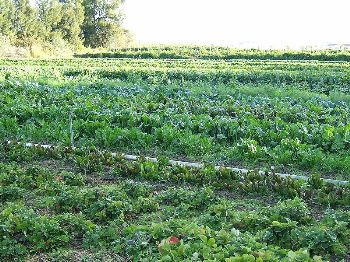by Larry
July, 2009World Hunger Relief, Inc.World Hunger Farm is a highly productive 25-acre ranch. Here are raised many vegetables as well as rabbits, chickens, cattle, goats, sheep, bees, and an emu. It turns out the farm is owned and operated by the home grown non-profit organization, World Hunger Relief, Inc., which began in 1976 and is located just outside Waco, in Elm Mott.
If World Hunger Relief had done nothing else in the past 33 years, it would already have made a very significant and positive difference. But its reach is really consistent with its name, for WHRI has numerous internships of several weeks to a few months' duration in which it allows people to learn by hands-on training in how to blend sustainable food generation with economic development in third world countries. Hundreds of individuals have now completed these internships. Many of them have gone on to assist international agencies in a score or more nations around the world. Along with ongoing, long-term projects to teach young people and adults in the efficient use of their land and water resources, and so enhance food production in particularly needy areas, WHRI has been valuable in showing populations how to manage after natural and war-related disasters, thus augmenting the efforts of other, better known aid organizations with quick, low cost efforts at restoring lost crops, water supplies, etc. In 1980, Carl Ryther, one of the early members of the WHRI team (who continued to work at the farm until his death in 1999), finished a training manual, "Backyard Food Production Systems." It has been translated into many languages and is influencing local farming techniques on at least four continents. One lesson here for me is that a few individuals and a seemingly insignificant organization can actually wind up making a very large positive difference. Amother is that, while extremely valuable work is called for in foreign lands, one does not necessarily have to go far away to achieve a major and worthwhile impact. World Hunger Farm and World Hunger Relief, Inc., for instance, are an inspiration both for what they do locally and for their accomplishments in numerous locations overseas. |
